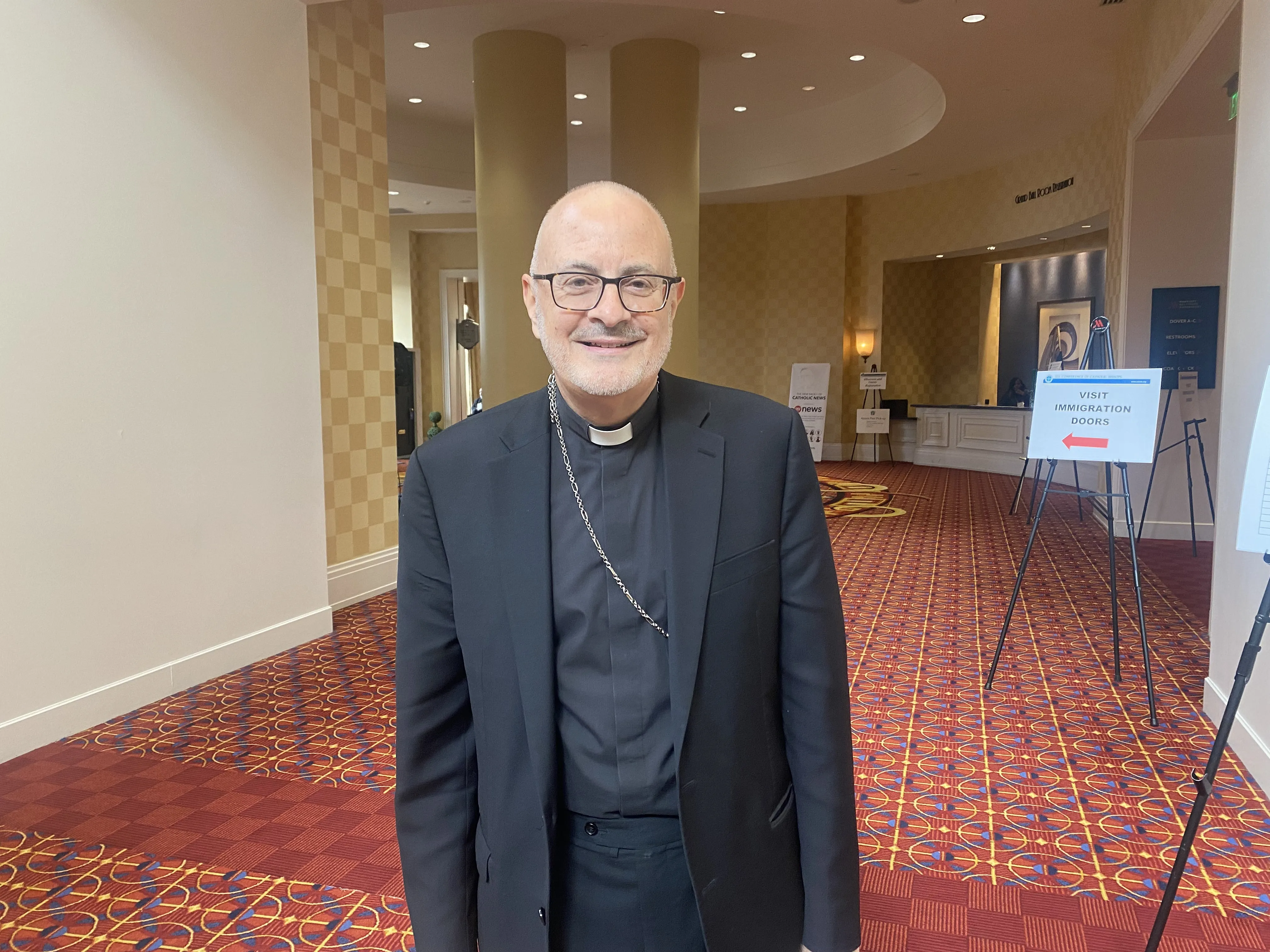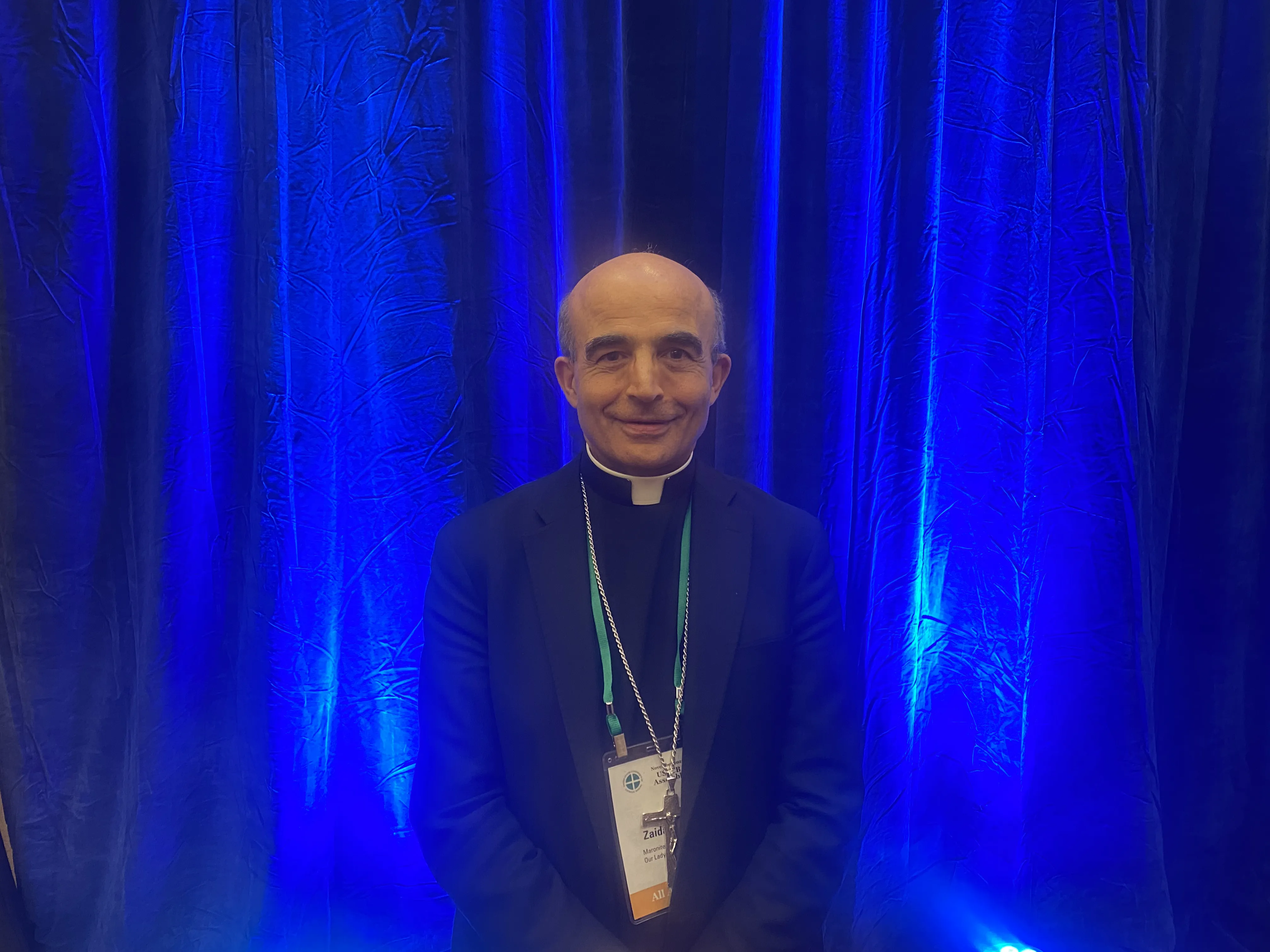
Boston, Mass., Nov 24, 2022 / 11:00 am (CNA).
What can the Maronite Catholic Church offer to aid the U.S. bishops’ Eucharistic Revival that is currently underway in the United States?
The two Maronite bishops in the United States say the answer is the Maronite liturgy, with its deep reverence and focus on Jesus Christ, truly present in the Eucharist.
The U.S. bishops’ National Eucharistic Revival, a three-year initiative by the U.S. bishops to inspire Eucharist belief, follows a 2019 Pew Research study that suggested that only about one-third of U.S. Catholics believe the Church’s teaching that the Eucharist is truly the body and blood of Christ.
“I think what we have to offer, of course, is the liturgy, which is the focus of our eucharistic reverence and amazement,” Bishop Gregory Mansour of the Maronite Eparchy of St. Maron of Brooklyn told CNA at the U.S. bishops’ conference in Baltimore Nov. 16.
Mansour said that his parishes offer eucharistic adoration and added that when on retreats the priests will adore the Blessed Sacrament for one hour each night.
He added that he thinks the Maronite way of receiving Communion by intinction — when the priest dips the Lord’s body into his precious blood and places it on the communicant’s tongue — is a “very healthy way” to receive.
“It’s almost a way of receiving Communion that you have the best of all the worlds. You have it receiving on the tongue; you have it receiving the body and blood; and you have it where you have a moment just to receive Our Lord and reflect on him,” he said.
“So I like that practice, and I notice some in the Latin Church have copied it, although I don’t think it’s the norm,” he said.

Bishop Abdallah Elias Zaidan of the Eparchy of Our Lady of Lebanon of Los Angeles said that “the Eucharist must constitute our identity,” noting that “all of us are members of that body of Christ.”
Zaidan, who was also at the bishops’ conference, said that the suffering, the needy, the brilliant, and the intelligent are all part of the body of Christ and “we have to share and put everything in common to help others.”
“From that point,” he said, “in our Maronite liturgy, we have that beautiful reverence to the Eucharist. In everything we do, we go back to the source and summit of our faith as well. Christ’s presence, forever present.”Mansour said that to aid Catholics in their faith in the Real Presence, “I feel strongly it’s good for us to see what we can do to bring people back to church.”
“So we have to have beautiful liturgy, good choir, good preaching, welcoming, youth programs, young adult programs, organization, and we can’t just assume that because the church doors are open, people are going to want to come,” he said.

Mansour said that he thinks the Maronite Church had success during the COVID-19 pandemic restrictions because his parish doors were left open while abiding by state and local ordinances.
“And I think because we did that, people came from outside and even our own people as well as non-Maronites came in and found a wonderful treasure. The Maronite Church is a treasure and they made their home there,” he said.
“So I think the Maronite Church has to just keep doing what she’s always done over the ages. That is just to be a church, be an aesthetical, monastic, prayerful, strong witness to Christ, to the world,” he said.
Mansour said that the laity can inspire faith in others by having a devotion to Jesus, “especially in the presence of the tabernacle.”
“You can come early to Mass and stay a few minutes after to give thanks. You can participate in the liturgy. When the parish does have eucharistic adoration, you could be one of the first to be there and to really believe it. I think your witness is such that you could inspire a few people just by being a faithful man or woman,” he said of the laity.
As far as his role as a bishop, Mansour said that he can inspire eucharistic devotion by being devoted to Christ in the Blessed Sacrament.
“I’ve learned a few things over the years from others. One of them is an older bishop that I could see every time he’d celebrate the liturgy. He’d go kneel after liturgy, in front of the tabernacle, just to give thanks,” he said.
He added that he didn’t cultivate a strong devotion to Christ in the Blessed Sacrament when in seminary, but he eventually did, and said that “it became such a powerful force in my life.”
“I want to be close to Christ’s presence in the Eucharist everywhere I go. So that’s why I’ve asked all of our priests to put the tabernacle back in the center of the churches. A very clear sign of Christ’s presence,” he said.
Mansour said that one of his predecessors, Archbishop Francis Mansour Zayek, “used to say the life of the priest is like a vigil candle in front of the sacrament. His life is consumed in drawing attention to Christ in the Blessed Sacrament. That’s the role of a priest.”
Mansour said that the Blessed Virgin Mary can be an inspiration for all to be “a tabernacle for God’s presence” just as she was when Jesus was in her womb. He said he encourages praying the rosary as well.
Zaidan holds the same sentiments about the Mother of God, noting that “there is always a special mention of her in our prayers” in the Maronite Church.
He said that Marian devotions such as the rosary and the Miraculous Medal can aid eucharistic devotion as well. Zaidan said that all of the Maronite patriarchal sees are always placed under the patronage of the Blessed Mother.
“And if you go to every hometown in Lebanon, if the Blessed Mother is not the patroness of that town, you’d see special shine [to her] or something,” he said.
“She senses our needs in so many ways and she knows in her heart to intercede on our behalf as well,” Zaidan said.
If you value the news and views Catholic World Report provides, please consider donating to support our efforts. Your contribution will help us continue to make CWR available to all readers worldwide for free, without a subscription. Thank you for your generosity!
Click here for more information on donating to CWR. Click here to sign up for our newsletter.





Leave a Reply